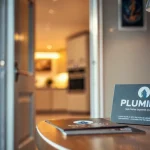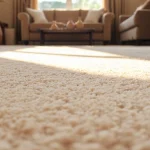Top Strategies to Keep Your UK Basement Flat Mold-Free
Living in a basement flat in the UK can be a cozy and affordable option, but it comes with its own set of challenges, particularly when it comes to managing moisture and preventing mould growth. Here’s a comprehensive guide to help you keep your basement flat mould-free and ensure a healthy, comfortable living environment.
Understanding the Causes of Mould
Before we dive into the strategies for preventing mould, it’s crucial to understand what causes it in the first place. Mould thrives in damp, moist environments, and there are several types of dampness that can lead to mould growth:
Also to see : Top Strategies for Maximizing Natural Light in Your UK Basement Conversion
Rising Damp
Rising damp occurs when water from the ground rises up through the walls due to the lack of a damp proof course (DPC) or a faulty one. This is common in older properties that were not originally fitted with a DPC[2].
Penetrating Damp
Penetrating damp happens when water enters the property through external walls, often due to poor maintenance, cracks in the walls, or inadequate waterproofing. Driving rain can soak through masonry, especially in areas with high rainfall[2].
Also read : Seamlessly Incorporating Smart Home Technologies into Your UK Grade II Listed Building
Condensation Damp
Condensation damp is caused by moisture in the air condensing on cold surfaces. This is often seen in bathrooms, kitchens, and laundry rooms where ventilation is poor. It can also occur when warm, moist air meets a cold surface, such as windows or walls[2].
Damp Proofing Your Basement Flat
Damp proofing is a critical step in preventing mould growth. Here are some effective methods to consider:
Chemical Damp Proof Course
A chemical DPC involves injecting a waterproof chemical solution into the walls to create a barrier against moisture. This method is particularly effective for treating rising damp in older buildings.
- Diagnosis: A professional must assess the damp problem to confirm if rising damp is the issue.
- Injection: Holes are drilled into the mortar or brickwork at the bottom of the wall, and a silicone-based cream or gel is injected.
- Curing: The silicone material sets, forming a barrier that prevents moisture from rising up the wall[2].
Basement Tanking
Basement tanking is a method used to waterproof basement walls and floors, preventing moisture from seeping in from the ground. This involves applying a waterproof membrane to the walls and floors to ensure they remain dry[2].
Managing Moisture and Ventilation
Effective moisture management and ventilation are key to preventing mould growth.
Using Dehumidifiers
Dehumidifiers can be a game-changer in managing indoor humidity levels. Here are some tips for using them effectively:
- Right Size: Ensure the dehumidifier is the right size for your space and the scale of the damp you’re dealing with.
- Placement: Place the dehumidifier near the source of moisture or where humidity is highest. Position it at least 6 inches away from a wall to allow for optimal airflow[3].
- Humidity Levels: Set your chosen humidity target; generally, no higher than 60% is recommended.
- Moisture Channels: Create ‘moisture channels’ by placing dehumidifiers opposite air vents to guide humid air away from problem areas[2].
Improving Ventilation
Good ventilation is essential for reducing condensation and preventing mould.
- Extractor Fans: Install extractor fans in bathrooms, kitchens, and laundry rooms to remove moist air.
- Windows and Doors: Ensure windows and doors are well-maintained and functional. Open them regularly to let fresh air in and stale air out.
- Air Vents: Make sure air vents are clear and functioning properly to allow for adequate airflow[2].
DIY Methods to Remove Mould
If you do encounter mould, here are some DIY methods to remove it safely and effectively:
Using White Vinegar
White vinegar is a natural and effective way to kill mould.
- Mix with Water: Mix white vinegar with water in a 1:1 ratio in a spray bottle.
- Spray and Wait: Spray the solution directly onto the mould, let it sit for at least an hour, then scrub the area with a tough-bristled brush.
- Rinse and Dry: Rinse the area with water and leave it to dry. Dispose of the brush in a sturdy trash bag to prevent spores from spreading[1].
Using Baking Soda
Baking soda can also be used to clean grout and other areas affected by mould.
- Mix with Hydrogen Peroxide: Mix one part hydrogen peroxide with two parts baking soda to create a paste.
- Apply and Wait: Apply the paste to the grout using an old toothbrush, let it work for 20 minutes, then rinse away with cold water[1].
Preventing Mould from Coming Back
Preventing mould from returning is just as important as removing it. Here are some long-term strategies:
Fixing Leaks and Sealing Gaps
Repair any leaks and seal gaps around windows, doors, and walls using caulk or other sealants. This helps to prevent water from entering your home and reducing the risk of mould growth[1].
Protecting External Walls
Protect external walls from rain by ensuring that any external wood, brick, or stonework is well-maintained. Driving rain can soak through masonry quickly, so regular checks and maintenance are crucial[1].
Monitoring Humidity Levels
Use a hygrometer to monitor the humidity levels in your home. Ensure that the moisture reading is below 15% to prevent mould spore proliferation[1].
Table: Comparison of Damp Proofing Methods
| Method | Description | Advantages | Disadvantages |
|---|---|---|---|
| Chemical DPC | Injecting a waterproof chemical solution into the walls. | Quick, cost-effective, and long-term protection. | Requires professional installation. |
| Basement Tanking | Applying a waterproof membrane to basement walls and floors. | Effective for preventing moisture from the ground. | Can be expensive and requires significant work. |
| Condensation Control | Improving ventilation and insulation to reduce moisture buildup. | Cost-effective and easy to implement. | May not address underlying damp issues. |
| Lime Plaster | Using lime mortar to create a breathable plaster. | Suitable for older buildings, breathable. | May not cure the damp problem if the cause is not addressed. |
Practical Tips and Advice
Here are some practical tips to help you maintain a mould-free basement flat:
- Regular Checks: Regularly inspect your home for signs of dampness and mould.
- Landlord Involvement: If you are a tenant, inform your landlord about any damp or mould issues promptly.
- Ventilation Habits: Make it a habit to open windows and use extractor fans, especially after showering or cooking.
- Tumble Dryer: Ensure your tumble dryer is properly vented to the outside to prevent moisture buildup.
- Cleaning Routine: Include mould-prone areas in your regular cleaning routine, using methods like those described above.
Quotes and Expert Insights
- “Driving rain can soak through masonry over 2 feet thick in as little as 24 hours,” explains Gordon Grainger, Director at Kingfisher Building Products. This highlights the importance of protecting external walls[1].
- “Keeping these areas heated will help to reduce the chances of mould growth simply because mould has an ideal temperature and moisture range in which to live and thrive,” advises AHERA-certified building inspector Uribe[1].
- “Before spending thousands on mould treatment, get a basic infrared camera and scan your walls at different times of day. I’ve found that mould problems often start in places you’d never suspect,” recommends waste expert Graham[1].
Keeping your UK basement flat mould-free requires a combination of effective damp proofing, good ventilation, and regular maintenance. By understanding the causes of mould, implementing the right damp proofing methods, and using DIY techniques to remove mould, you can ensure a healthy and comfortable living environment. Remember, prevention is key, so stay vigilant and take proactive steps to protect your home from damp and mould.
Local Guidelines and Best Practices
Understanding UK mold prevention guidelines can significantly reduce mold-related issues in basements. The UK has specific building regulations designed to manage dampness, such as ensuring proper insulation and ventilation. Adhering to these guidelines helps maintain a moisture-free environment.
A key recommendation from experts involves the installation of efficient ventilation systems, such as mechanical extract ventilators, especially in areas prone to moisture. These systems replace stale, damp air with fresh air, helping prevent mold growth.
Experts also advocate for regular inspections and moisture assessments as part of routine maintenance. Utilizing tools like moisture meters can help identify hidden dampness, allowing for timely intervention.
For construction and renovation projects, selecting appropriate materials is crucial. Mold-resistant materials, like specialised paints and insulation, are widely recommended. The UK market offers a range of these products designed to withstand British climates.
Homeowners are further encouraged to seek professional advice when dealing with persistent mold issues. Professional services can offer tailored solutions and apply preventative measures effectively, ensuring long-term protection against dampness and mold in basements.









